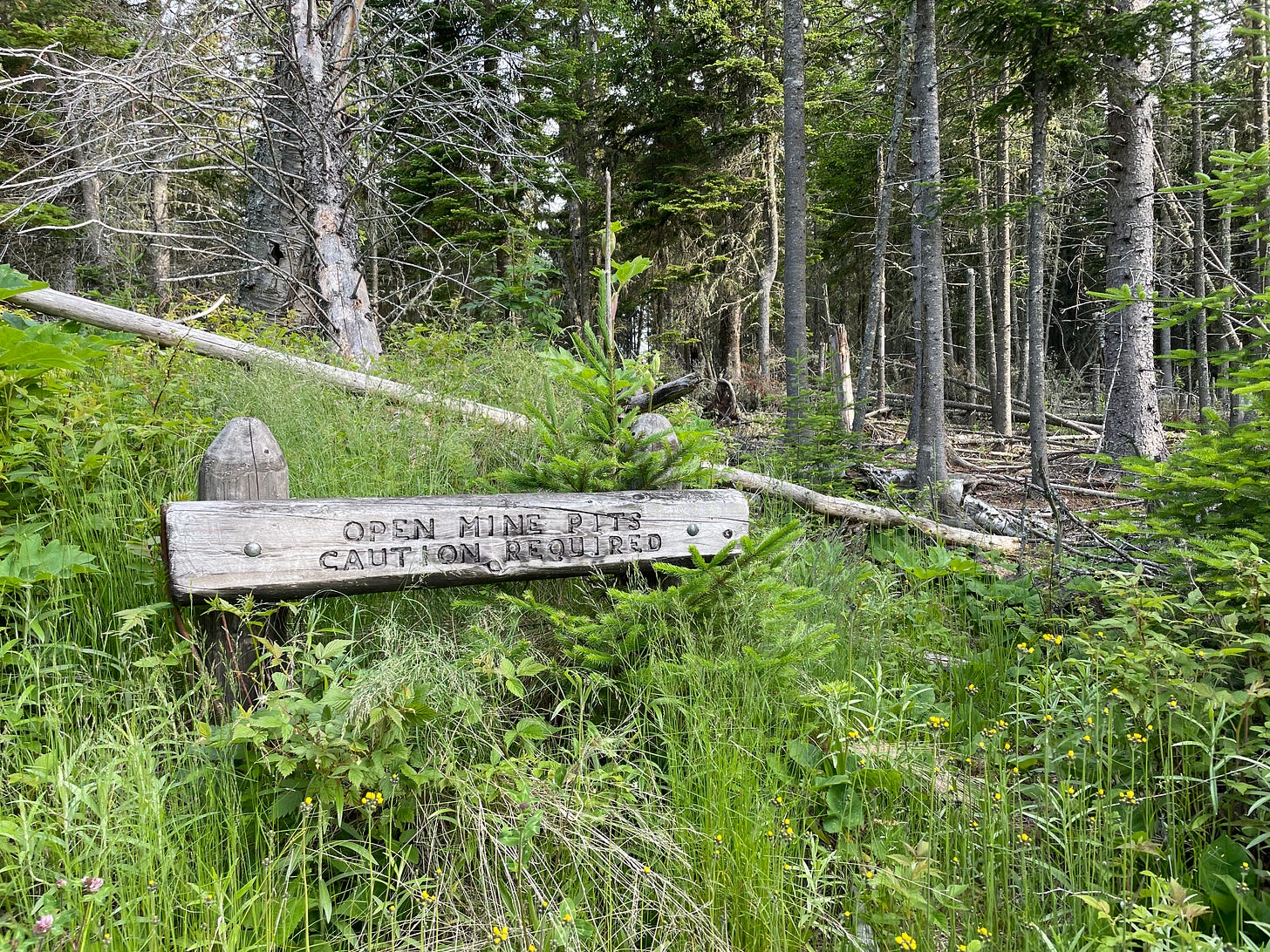
I’ve been thinking a lot about Isle Royale over the past weeks. Not about its wild beauty—the billion year old lava flow that became the Greenstone Ridge, the hundreds of species of flowering plants, the carcasses of moose picked clean by wolves—but about its scars. Before Isle Royale became a National Park, before it was designated as a wilderness area or as a UNESCO International Biosphere Reserve, the island was mined for copper. Though mining operations ceased over a century ago, the impact of that resource extraction remains visible on the landscape today.
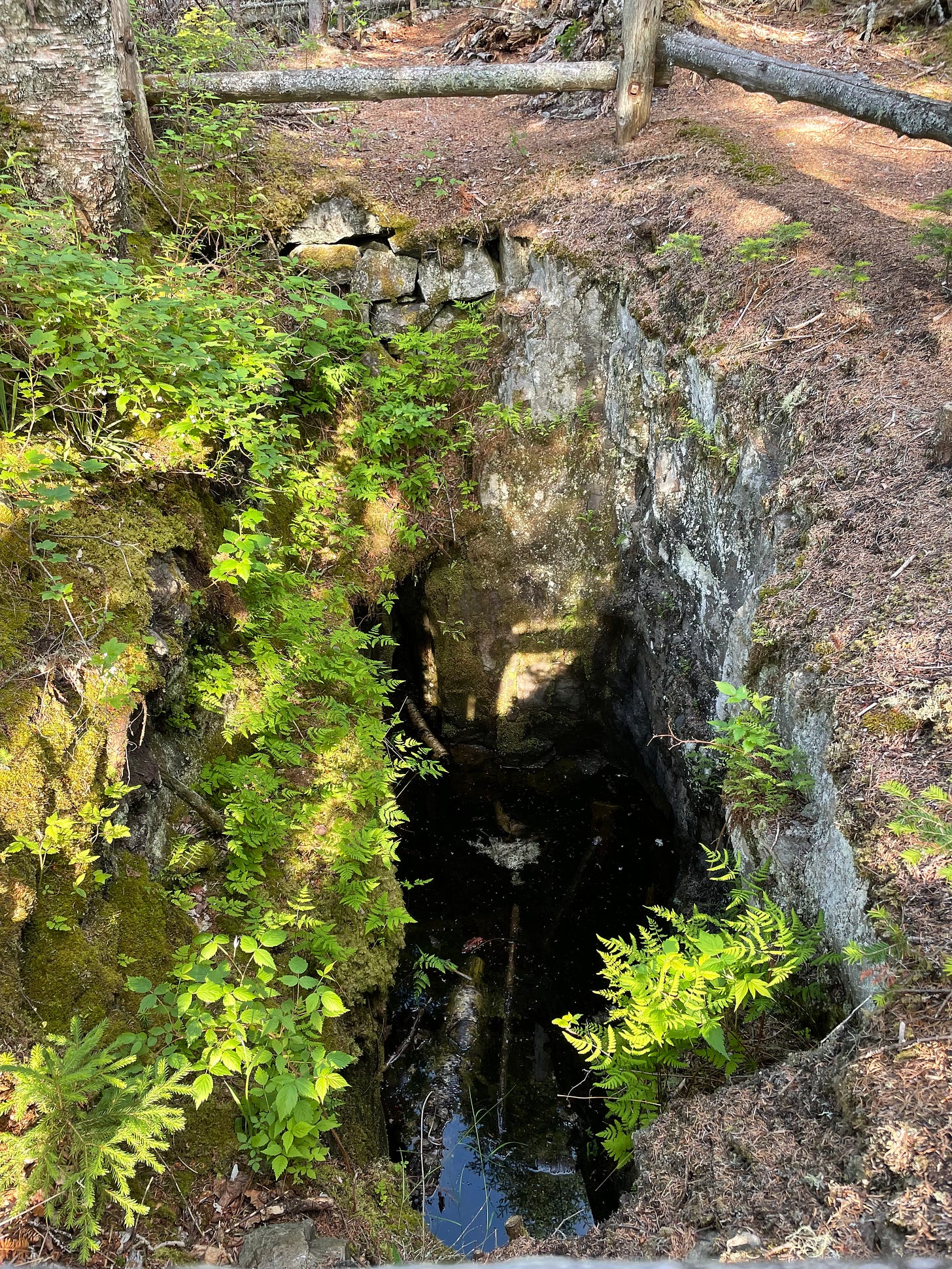
Isle Royale was mined commercially for about 50 years, starting in 1843.1 Though the mining companies descended in the hopes of getting rich, most closed up shop fairly quickly. The harsh winters made year-round residence on the island difficult and the remoteness meant that every supply run was at the mercy of Lake Superior. An anecdote in a National Park Service article about the Minong Copper Company describes how not even communication with the mainland could be counted on:
“That winter was a hard one, with too much ice for boats and not enough for travel over the ice. Directors of the company, who had expected to have regular mail service by way of Pigeon River, became alarmed over the lack of communication, so alarmed, indeed, that one director tried to get in touch with [Minong Copper Company agent Alonzo C.] Davis through a medium.”
By the end of the century, the cost of extracting the remaining copper became too high to justify further effort, so the mining companies went in search of greener pastures.
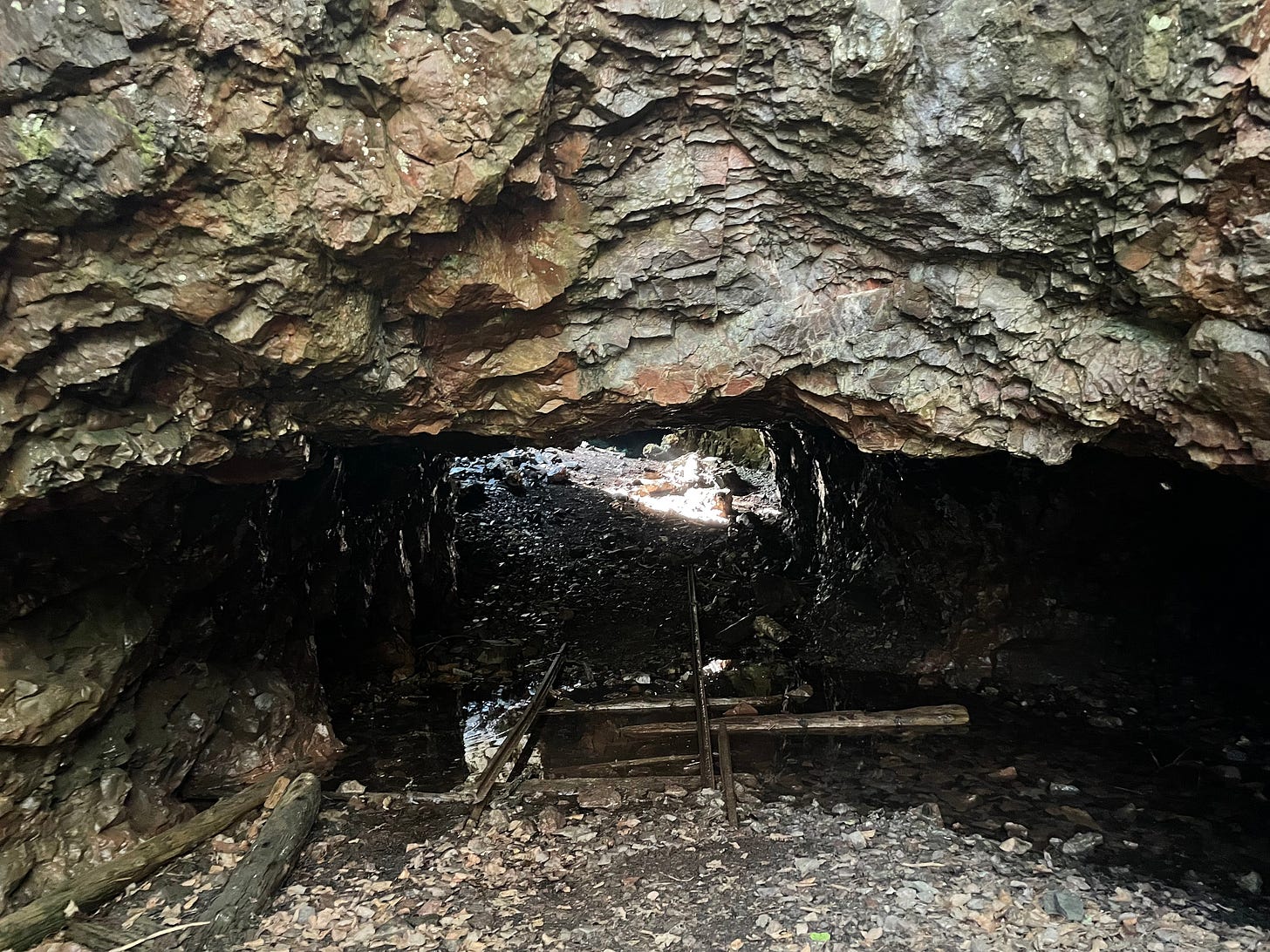
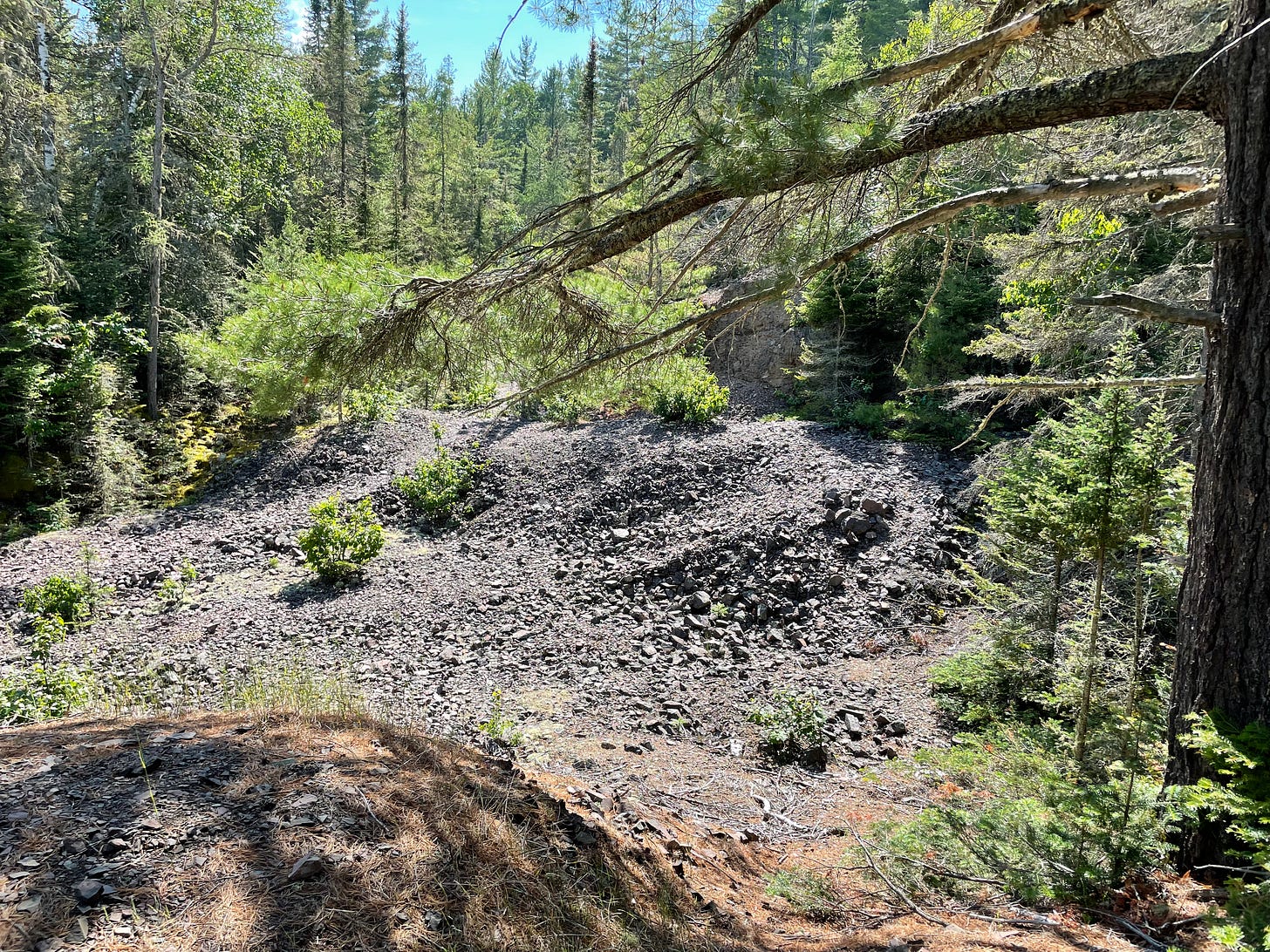
Even so, the remnants of those mining operations are obvious to those who visit the park. Tailings—the waste rock that was separated from the desired copper—stand out from the surrounding scenery, even where industrious plants have taken root in the rocky mounds. Railroad tracks can still be found at the Minong Mine and hoist engines are rusting amongst the trees near the Island Mine campground. And of course, there are the open mine pits.
A hiker will likely only notice the holes that have been blocked off with log fences for safety, but according to an NPS article, there are many more for those who know where to look:
“A promising fissure or contact vein or dike would be located, sometimes from a boat, sometimes by burning off the vegetation to expose the bedrock. The vein would be followed up, with miners excavating and blasting as they went along, and if the prospects looked promising a shaft would be sunk. As a result, in addition to the established mines, there are hundreds of sites where such explorations are evident.”
If the copper had been more accessible or transportation to the island less onerous, would the wilderness area exist today? Or would it be an abandoned pile of tailings in the middle of Lake Superior? The math on mining Isle Royale didn’t work out, so there was still something left to be protected as a national park decades later.
Saved by a profit and loss statement.
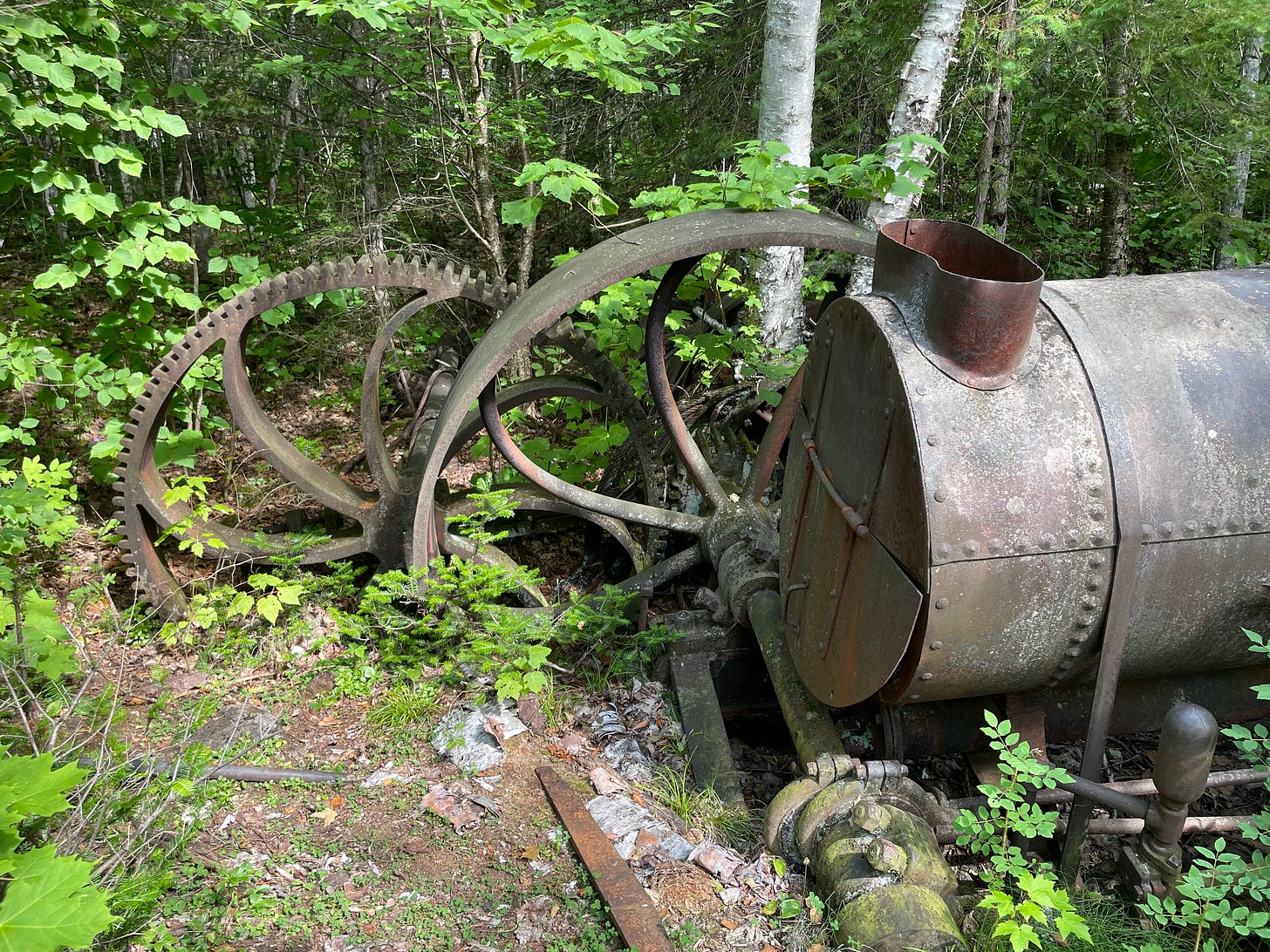
Today, our public lands are at risk of scarring well beyond century-old mine pits and abandoned hoist engines. Our national forests are being opened up for increased logging, leases are being cancelled for buildings that house visitor centers and museums at national parks, the boundaries of national monuments are being reviewed, and the workforce of dedicated civil servants with specialized skills who protect and maintain these public lands is being gutted.
Public lands are now being analyzed as assets on a balance sheet, but they shouldn’t need to prove themselves as good financial investments. They are2, but they don’t need to be. Look at a forest—it’s more than just an assortment of trees that can be felled for timber and then replanted. It’s a carbon sink to help mitigate effects of climate change, it is home to endangered species of flora and fauna, it is the site of scientific research, and it is a place for recreation. Tallying up the market value of the timber and oil and ore doesn’t quantify the worth of an ecosystem.

It is maddening that these damaging policies can be instituted at all. Our national parks, forests, monuments, and other public lands have already been deemed worthy of protection by Congress and past presidents who looked at these places and said, “This should be saved for future generations.” Our government is entrusted to be the steward of these lands and to not squander it to increase short term profits for people who already have more wealth than they could spend in a hundred lifetimes.
In residential real estate—the industry I’ve worked in for the past eight years—a clear title cannot be presented to the buyers at the closing table unless all those on the deed agree to the terms of the sale.3 The American people hold the deed to these places—we are collectively the owner of our public lands—yet our objections in the past weeks have largely been ignored.

The scars at Isle Royale were inflicted with 19th century technology in a fairly inaccessible place and have had over a century to heal. I fear that it won’t take long for our public lands to bear gaping, oozing wounds as resource extraction operations begin with 21st century technology and the blessing of a president who cannot see the value in America’s best idea.4
However, there is evidence of copper mining on Isle Royale as early as 2500 BCE. According to the National Park Service:
“[S]ince the activity covered a period of at least 1,500 years, there is no basis for suggesting any highly organized efforts to procure the copper. Rather, the mining probably was pursued in the course of an annual round of hunting, fishing, and collecting berries and plants. The copper itself was cold-hammered into knives, points, and a variety of ornaments.”
According to a 2024 press release from NPS:
“The National Park Service report, 2023 National Park Visitor Spending Effects, finds that 325.5 million visitors spent $26.4 billion in communities near national parks. This spending supported 415,400 jobs, provided $19.4 billion in labor income, and $55.6 billion in economic output to the U.S. economy.”
Furthermore, a press release from the Department of the Interior the previous year found that each dollar appropriated to NPS created more than $10 in economic output. That’s a pretty damn good return on investment.
Or there is a court order.
The “best idea” is reference to a 1983 quote by writer Wallace Stegner who said:
“National parks are the best idea we ever had. Absolutely American, absolutely democratic, they reflect us at our best rather than our worst.”





Why is it that short term profits for the rich always outweigh long term benefits for the rest of us?
Thank you for the Grand Staircase-Escalante shoutout, a monument just a few hours south of me.
I lived and worked in Bears Ears National monument as it was created by then President Obama. Trump has been trying to severely downsize it for two terms now.
In my old hometown monument, Dinosaur National Monument, a good sized group held a public lands protest a few weeks ago. That, and the fact that westerners overwhelmingly support public lands (north of 75% in polls), gives me hope. In the 1950s, river runners and environmentalists blocked a dam at Echo Park in Dinosaur, protecting it from the same fate as Hetch Hetchy in Yosemite, and that same rowdy spirit lives on today.
I got my love for public lands from my dad, a lifelong federal employee with the Bureau of Land Management. That’s one of the greatest gifts that he ever gave me. I am so glad that he retired a year before all the layoffs and deranged policies that will undoubtedly be implemented.
Anyway, I’m rambling. Long live the ideas of Ed Abbey, Ellen Meloy, Tim DeChristopher and Terry Tempest Williams. As Ed wrote: The idea of wilderness needs no defense, it only needs defenders. You and I heard that clarion call at some point, and I thank you for sticking up for public lands. They truly are our greatest idea, and they belong to all of us, worldwide, and not some extractive industry barons.